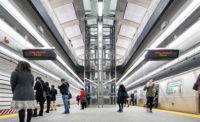In the mid-1990s, two highway projects oneither side of the country helped to create a paradigm shift in the way U.S. infrastructure improvements would be financed. Dulles Greenway in northern Virginia and state Route 91 Express Lanes in Los Angeles were designed and built almost entirely with private funds, giving rise to what would become public-private partnerships, or P3s.
Enthusiasm and skepticism greeted both projects. While some saw the nascent P3s as the ideal solution for a growing shortfall in public transportation funds, others questioned whether projects would meet states' exacting standards for quality and safety, how the approach would affect construction and municipal workforces and whether taxpayers would have to pay for failed business deals, no matter how good the ideas seemed.
Two decades later, many of these questions have been answered. The number and scope of P3 projects have grown at a seemingly exponential rate, with some state transportation agencies routinely relying on both solicited and unsolicited proposals to move forward projects that might otherwise languish for years.
But others have not produced returns or were pulled for political expediency. Georgia last month canceled its West by Northwest HOT lane project, which had $275 million in federal funds, after a motorist outcry over impacts on traffic flow. "Critics of the U.S. market point to lack of consistency in the process," says Sallye Perrin, Parsons Brinckerhoff vice president and P3 practice leader. "This is a true challenge."
Several states still lack legislation that would authorize them to use P3s for new transportation construction (see chart, next page). Opposition has come from unions, toll-hating motorists and those who feel that infrastructure ownership is a divine municipal right. Despite P3 pervasiveness, the concept is not one that can be cut-and-pasted across agencies or state borders or even across projects in a DOT's inventory.
Kome Ajisa, program manager at the new P3 office in the California Dept. of Transportation (CalTrans), says that of the agency's approximately 2,000 annual projects, only a handful will be suitable. "We look to mainly large, complex, one-off projects as P3 candidates," he says.
One current example is the Presidio Parkway's $456-million second phase, which will enhance the structural and seismic stability of the south approach to the Golden Gate Bridge in San Francisco. While the initial $468-million cost relied on public funds, CalTrans is about to finalize a deal with a consortium of Hochtief and Meridiam Infrastructure to complete the complex project and assume management of the entire roadway for 30 years in exchange for an annual $20 million to $25 million availability payment. A legal challenge by the state's activist public employee union was rejected by Calfornia's high court in November.
Under its groundbreaking 1995 legislation related to P3s, Virginia recently restructured project processes to fix what the state's new P3 Director Tony Kinn calls "inconsistencies—the fits and starts you typically see with a start-up business." With a separate office now responsible for P3s, "we can create a level environment that prospective private-sector partners will see as being more compatible with doing business," he adds.
The state is considering an unsolicited $4.5-billion proposal from a consortium that includes Kiewit Infrastructure Co., Skanska USA Civil and PB to improve three James River crossings in the Hampton Roads area.
With the era of robust federal and state transportation funding over at least for the foreseeable future, even states lacking enabling legislation or experience with P3s are having to get up to speed. "The learning process is far from over," says Kirk Steudle, director of Michigan's DOT and president of the American Association of State Highway and Transportation Officials.







Post a comment to this article
Report Abusive Comment